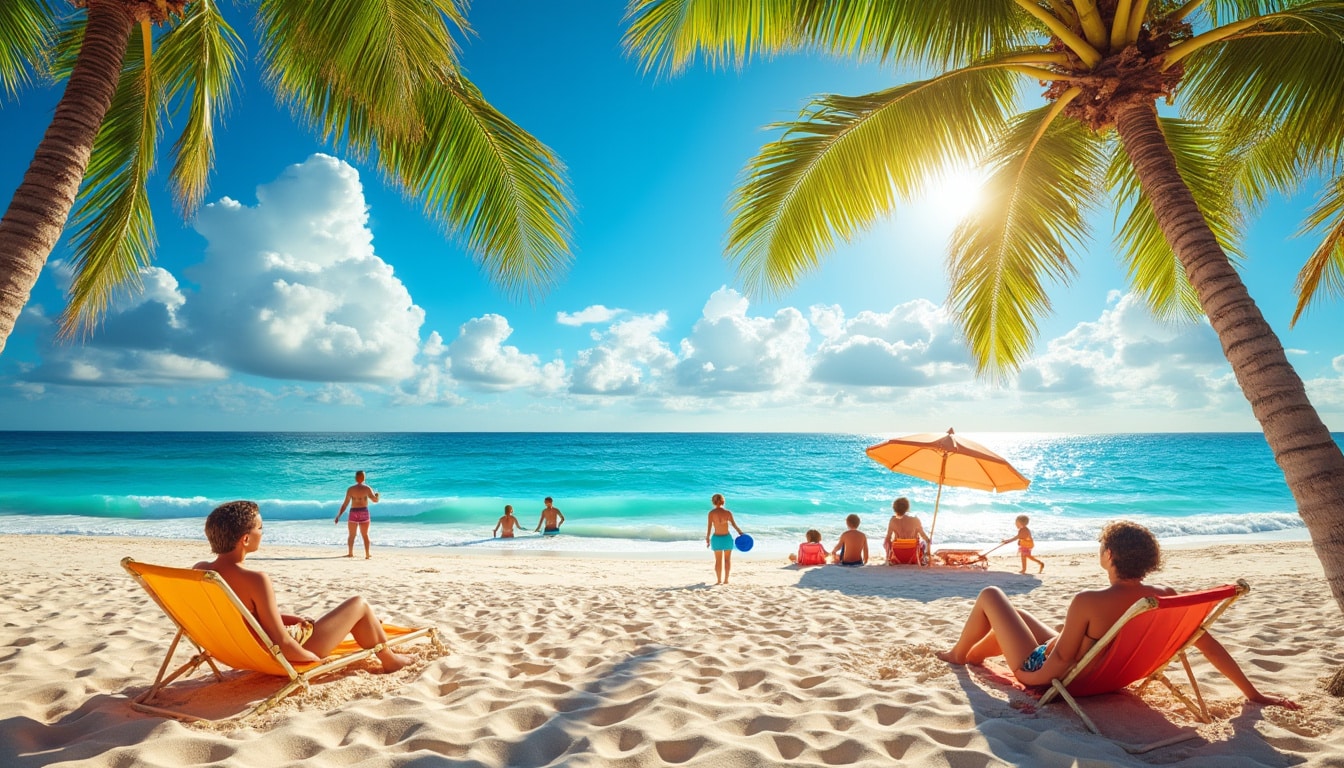Located on the southeastern coast of Florida, Fort Lauderdale is a region known for its stunning beaches, canals, and vibrant lifestyle. One of its defining characteristics is its weather—a tropical climate that draws tourists and sun-seekers all year round. As one explores Fort Lauderdale, understanding its weather patterns is key to making the most of any visit. The seasons, temperatures, and weather events can greatly influence travel plans, outdoor activities, and even daily life for residents.
Seasonal Weather Patterns in Fort Lauderdale
Fort Lauderdale boasts a tropical rainforest climate, according to the Köppen climate classification. It experiences two primary seasons: the wet season, extending from May to October, and the dry season, from November to April. This distinct pattern shapes life in the city, from tourism peaks to local activities and cultural events.
During the wet season, Fort Lauderdale sees the majority of its annual rainfall. 🌧️ Thunderstorms are frequent, especially in the afternoons, often accompanied by short bursts of heavy rain. It’s a season characterized by high humidity and sultry temperatures, often reaching the high 80s or low 90s Fahrenheit (around 31-33°C). The tropical storms can be intense but usually dissipate quickly, revealing clear skies once again.
The dry season, on the other hand, offers a respite from the heat and humidity. With less rainfall and cooler temperatures ranging from the mid-60s to mid-70s Fahrenheit (18-24°C), it is an ideal time for outdoor activities. This period is especially popular among tourists escaping colder climates, leading to an influx of visitors and a bustling atmosphere in the city.
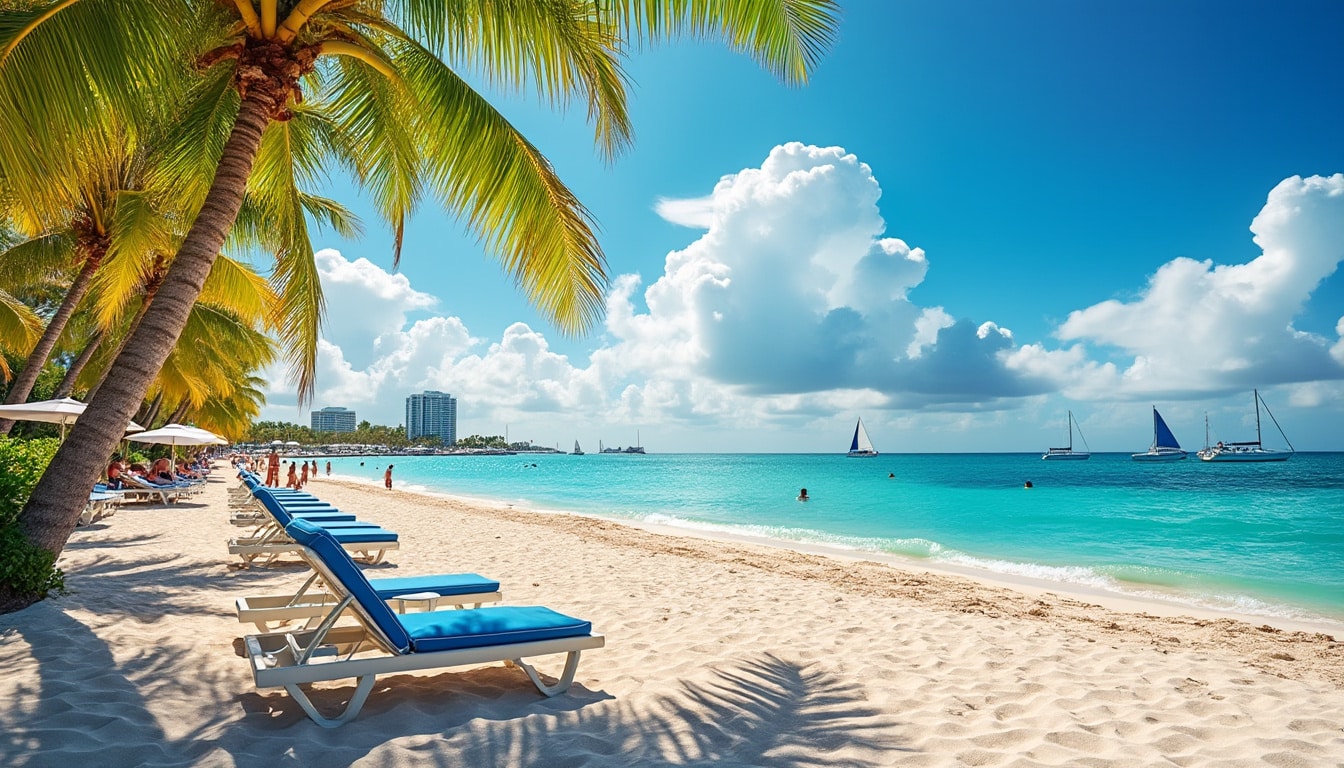
Some local events to note during the dry season include the Fort Lauderdale International Boat Show and countless festivals celebrating art, music, and food. For those planning a trip, understanding Fort Lauderdale’s seasonal weather can help in packing accordingly and crafting an itinerary that takes full advantage of favorable conditions.
Average Temperatures and Humidity Levels
When planning trips to Fort Lauderdale, it’s crucial to consider both the temperature and humidity levels. The city enjoys warm temperatures year-round, which is a major attraction for visitors and residents alike. However, the level of comfort can be significantly affected by the humidity, especially during the summer months. 🔥
Average monthly temperatures range from around 75°F (24°C) in January, the coolest month, to approximately 90°F (32°C) in July and August, the hottest months. The consistent warmth makes it perfect for beachgoers and outdoor adventurers. Even in the winter, the mild temperatures allow for sunbathing and water sports.
Humidity, a noticeable element in Fort Lauderdale’s climate, tends to be higher during the summer months, adding a layer of moisture-laden heat that can feel stifling at times. The “feels like” temperature often exceeds the recorded temperature due to this factor. It’s important to stay hydrated and seek shade or air-conditioned spaces when the discomfort becomes overwhelming.
| Month | High Temperature (°F) | Low Temperature (°F) | Humidity (%) 🌡️ |
|---|---|---|---|
| January | 75 | 60 | 64 |
| April | 82 | 67 | 73 |
| July | 90 | 77 | 80 |
| October | 85 | 72 | 75 |
Being well-prepared for these conditions can make a significant difference. Visitors are advised to wear light, breathable clothing, consider the time of day for outdoor activities, and always have sunscreen handy to protect against the sun’s rays. The humidity in Fort Lauderdale can be both a challenge and a unique experience for those unaccustomed to tropical climates.
Effect of Rain and Precipitation on Daily Activities
Rain in Fort Lauderdale, particularly during the wet season, can impact daily activities and travel plans. It’s not uncommon for sudden showers to sweep across the city, demanding flexibility and spontaneity from those looking to make the most of their day.
Rainy days can be unpredictable, but that doesn’t mean plans have to be cancelled. In fact, most rain events are brief and can even provide a refreshing break from the heat. 🌧️ The city’s infrastructure is well-equipped with proper drainage systems to handle these tropical downpours, though flash flooding can occasionally occur in low-lying areas.
During a rain event, activities might shift from outdoor excursions to exploring indoor attractions such as museums, shopping malls, and local restaurants. Movie theaters and aquatic centers are also popular rainy-day spots. Furthermore, a wider array of activities can be accessed by following updates from weather services such as the Weather Channel and WeatherBug, which offer up-to-minute forecasts and radar images.
- 🏢 Indoor attractions: museums, galleries, and events.
- 🍽️ Dining: explore local cuisine and hidden gems.
- 🛍️ Shopping: experience shopping centers like The Galleria.
- 🎭 Entertainment: theaters and live shows.
A wise traveler always checks the hourly forecast through reliable sources like Weather Underground and National Weather Service, which offer detailed updates and predictions. These resources can provide forecasts that help in planning the best time for outdoor adventures without unexpected interruptions.
Understanding Weather Extremes and Natural Phenomena
Fort Lauderdale is not immune to extreme weather conditions. Being a coastal city, it faces the potential impacts of hurricanes during the Atlantic hurricane season, which runs from June through November. While direct hits are rare, preparedness is essential for both residents and visitors. 🌀
Hurricane season brings heightened vigilance from local authorities and residents. Floridians often prepare by securing their homes and stocking up on essential supplies. The city’s emergency management teams work diligently to provide updates and information to keep everyone safe. It’s prudent to follow advisories from the National Oceanic and Atmospheric Administration (NOAA) and BBC Weather for the latest updates during this period.
While hurricanes are the most significant natural threat, other weather phenomena such as tidal flooding can occur, especially in the Las Olas Isles and other low-lying areas. It’s important to be mindful of any flooding and natural risks in Fort Lauderdale that may disrupt transportation and outdoor plans.
| Extreme Weather Event | Season | Preparation Tips 📌 |
|---|---|---|
| Hurricanes | June-November | Secure property, follow NOAA advisories, have emergency kits ready. |
| Tidal Flooding | Year-round | Avoid low-lying areas during high tides, check flood maps. |
Keenly staying informed and prepared can make a substantial difference when navigating Fort Lauderdale’s more severe weather conditions, ensuring the safety and enjoyment of all who come to this vibrant city.
The Impact of the Atlantic Ocean on Fort Lauderdale’s Weather
The geographical positioning of Fort Lauderdale along the Atlantic Ocean plays a vital role in shaping its weather. The ocean’s proximity not only influences the city’s climate but also affects its tidal patterns and weather volatility.
Marine conditions greatly impact the local economy, especially industries like tourism and fishing. The warm Gulf Stream current flowing offshore keeps the coastal waters pleasant year-round, making it a favorite spot for water sports such as surfing, boating, and diving. 🌊
The hot weather in Fort Lauderdale is tempered by ocean breezes, creating a more comfortable environment by the beach. These breezes also mitigate extreme temperature peaks, providing a cooling effect that balances the temperature disparity between day and night.
- 🏄♂️ Recreational activities: surfing, sailing, snorkeling.
- 🌬️ Cooling effect: ocean breezes moderating temperatures.
- 🚤 Economic influence: major tourism and maritime industries.
- 📸 Scenic views: stunning sunrise and sunset vistas.
Whether planning a leisurely day on the beach or a sailing trip, understanding the Atlantic Ocean’s influence ensures a more enjoyable and safe experience, making it vital to check marine forecasts from reliable sources like Intellicast and The Weather Network.
The seamless integration of ocean and weather patterns highlights the dynamic nature of Fort Lauderdale, informing both residents and travelers on how best to enjoy – and adapt to – the city’s natural conditions.
FAQ
- Does it snow in Fort Lauderdale? – Snow is extremely rare in Fort Lauderdale due to its tropical climate. Learn more about here.
- Is Fort Lauderdale warm throughout the year? – Yes, Fort Lauderdale generally maintains warm temperatures year-round. For specific details, explore here.
- What is the sunrise time in Fort Lauderdale? – Sunrise times vary, occurring earlier in summer and later in winter. Check here for exact times.

Climate & Weather in Fort Lauderdale
Fort Lauderdale, a gem on Florida’s eastern coastline, boasts a tropical rainforest climate where the sun shines brightly nearly all year round. A favored destination for beach lovers and sun-seekers, this city offers a unique weather experience that enchants visitors…
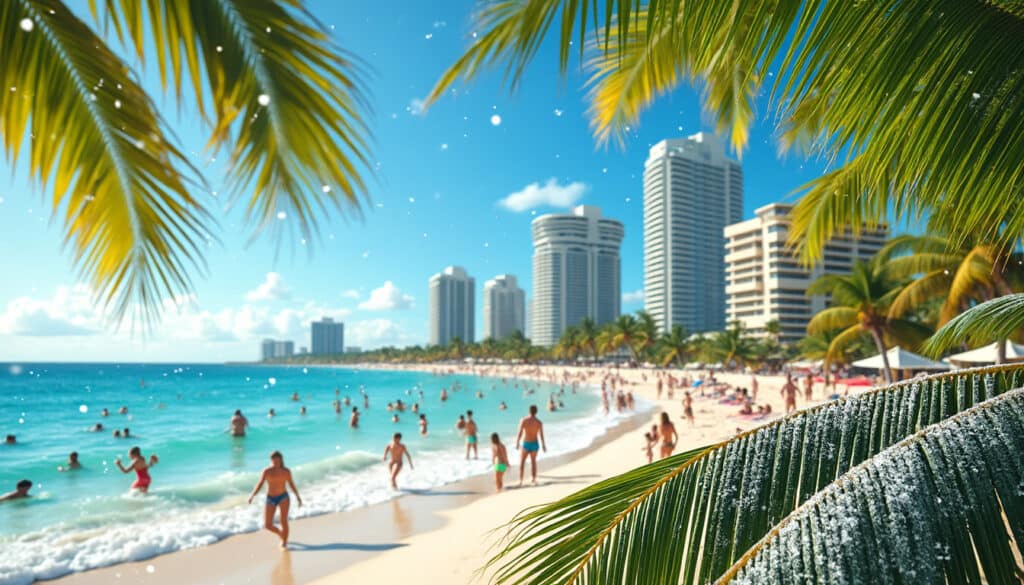
Does it snow in Fort Lauderdale?
Fort Lauderdale, known for its beautiful beaches and sun-soaked landscapes, might not be the first place people associate with snow. With weather patterns changing globally, it’s natural to wonder whether temperatures in this tropical paradise ever drop low enough for…

Flooding and natural risks in Fort Lauderdale
Renowned for its sandy beaches and warm, sunny days, Fort Lauderdale is a city that seamlessly blends leisure with nature’s maritime beauty. However, hidden beneath the sun-dappled waves lies a chronic issue that requires meticulous attention: flooding. Due to its…
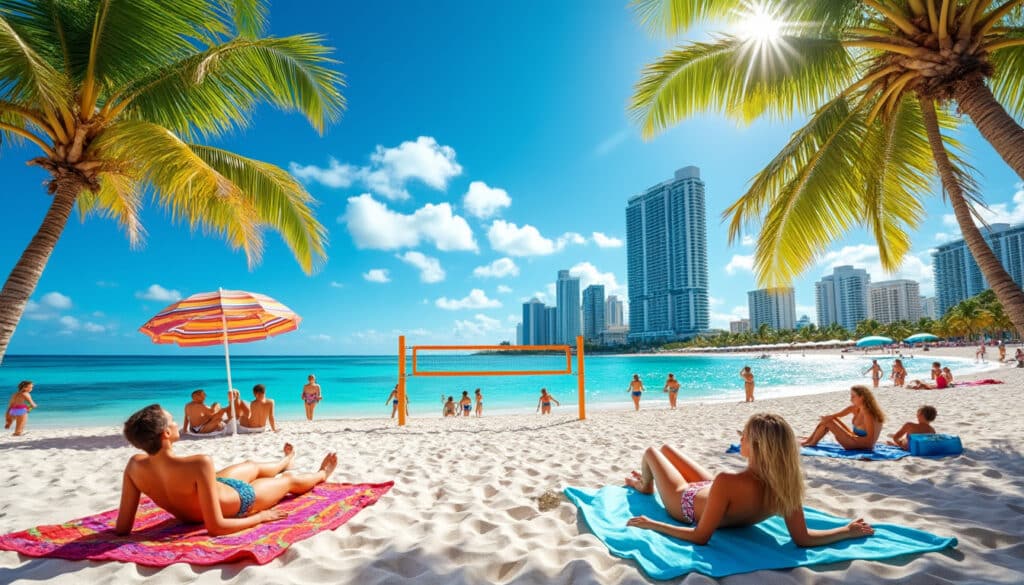
Hot weather in Fort Lauderdale
Fort Lauderdale, with its stunning beaches and vibrant nightlife, is a popular destination for sun-seekers from around the globe. From the bustling Las Olas Boulevard to the tranquil expanses of the Hugh Taylor Birch State Park, there’s plenty to explore…

Fort Lauderdale, often celebrated for its stunning beaches and vibrant nightlife, is also known for its distinctive weather patterns, particularly its humidity. As a coastal city, the feeling of humidity plays an essential role in the everyday life of its…
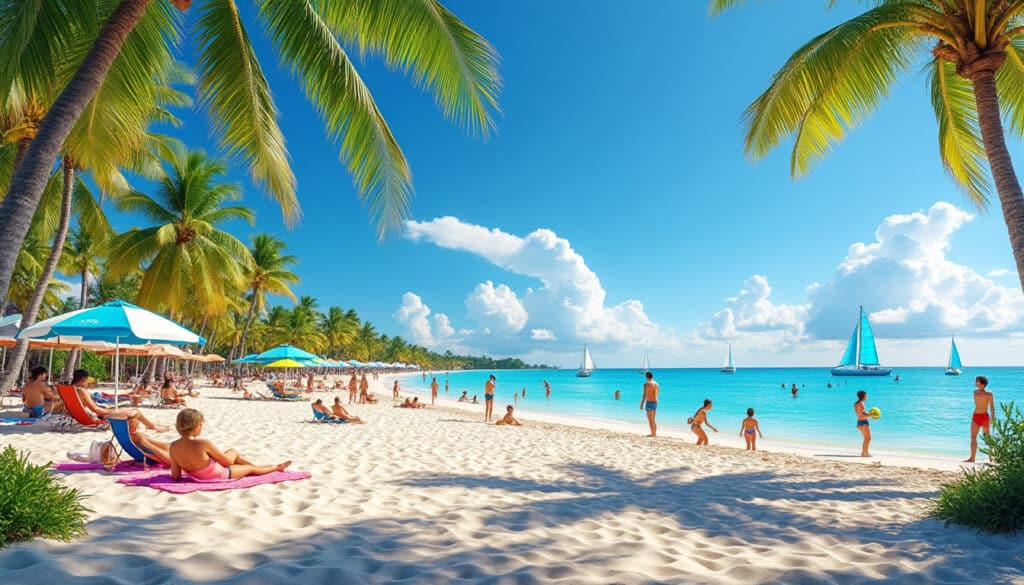
Is Fort Lauderdale warm throughout the year?
Whether basking under the glorious Florida sun or enjoying the gentle ocean breeze, Fort Lauderdale promises a near-constant state of warmth and vacation vibes. This ever-inviting destination, known for its sandy shores and vibrant city life, is more than just…
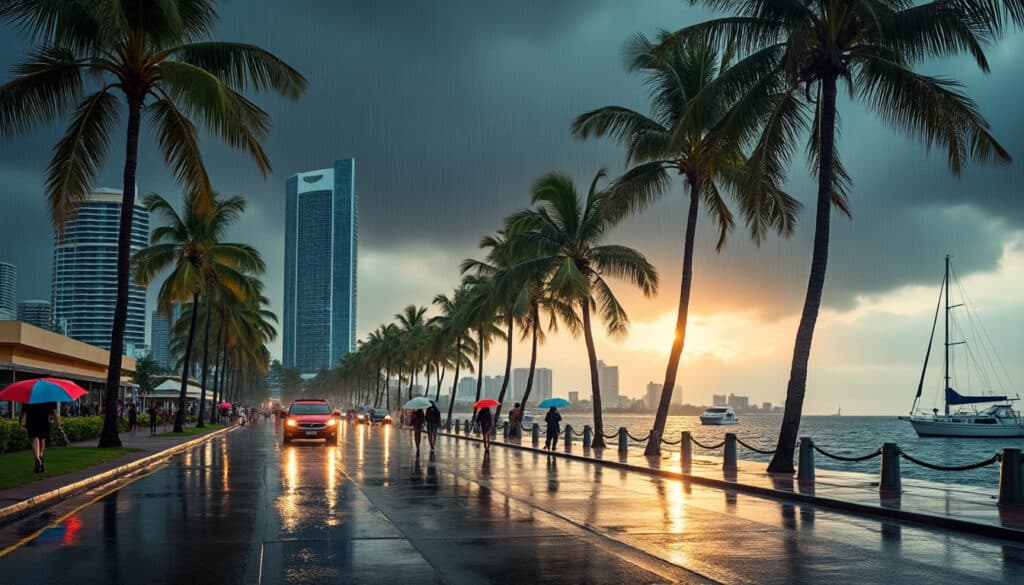
Rain and precipitation in Fort Lauderdale
Exploring the varied and tropical climate of Fort Lauderdale, one might be drawn to its sunshine-drenched beaches and coastal charm. However, rain and precipitation also play a significant role in shaping this vibrant Floridian city’s weather patterns. With a diverse…

Fort Lauderdale is a dream destination where sun, sea, and sand meet vibrant culture and thrilling entertainment. Known for its stunning coastline, this Floridian gem offers endless opportunities for fun and relaxation. But when is the best time to pack…

Sunrise times in Fort Lauderdale
Fort Lauderdale, a coastal gem in Florida, is renowned for its extensive network of sunny beaches and vibrant city life. Among the many draws to this city is the mesmerizing experience of watching the sun rise over the Atlantic Ocean.…
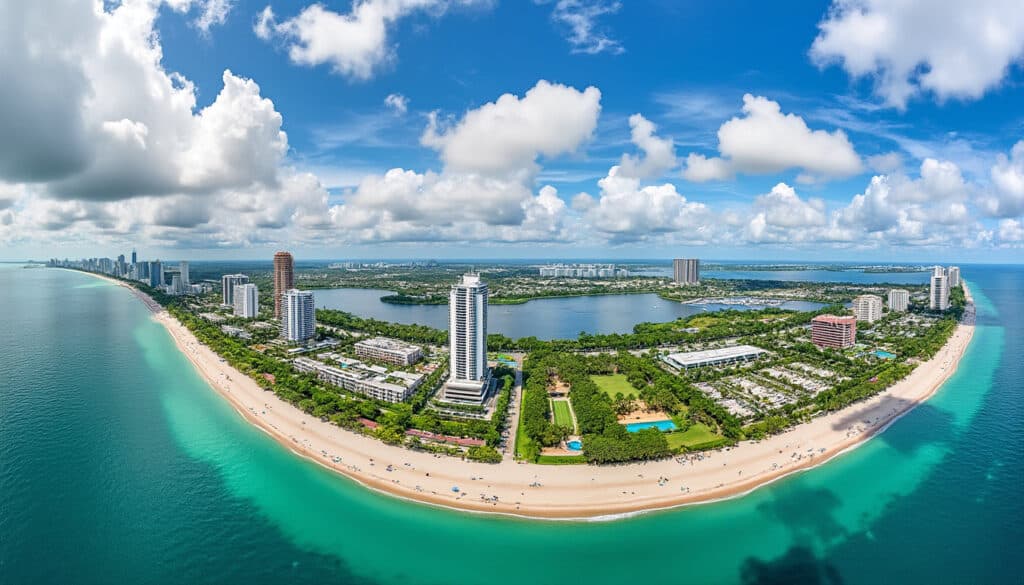
Weather in Fort Lauderdale by month
When planning a trip to Fort Lauderdale, understanding the weather is crucial to ensure that one’s visit is perfectly timed with favorable climate conditions. This vibrant city, nestled along Florida’s southeastern coast, boasts of a typical tropical monsoon climate. Known…

Cold weather in Fort Lauderdale
Fort Lauderdale is often associated with warm, sunny weather and beautiful beaches. However, every now and then, Floridians get to experience a surprising twist: a cold spell. When cold fronts move across Fort Lauderdale, temperatures can dip unexpectedly, making residents…

